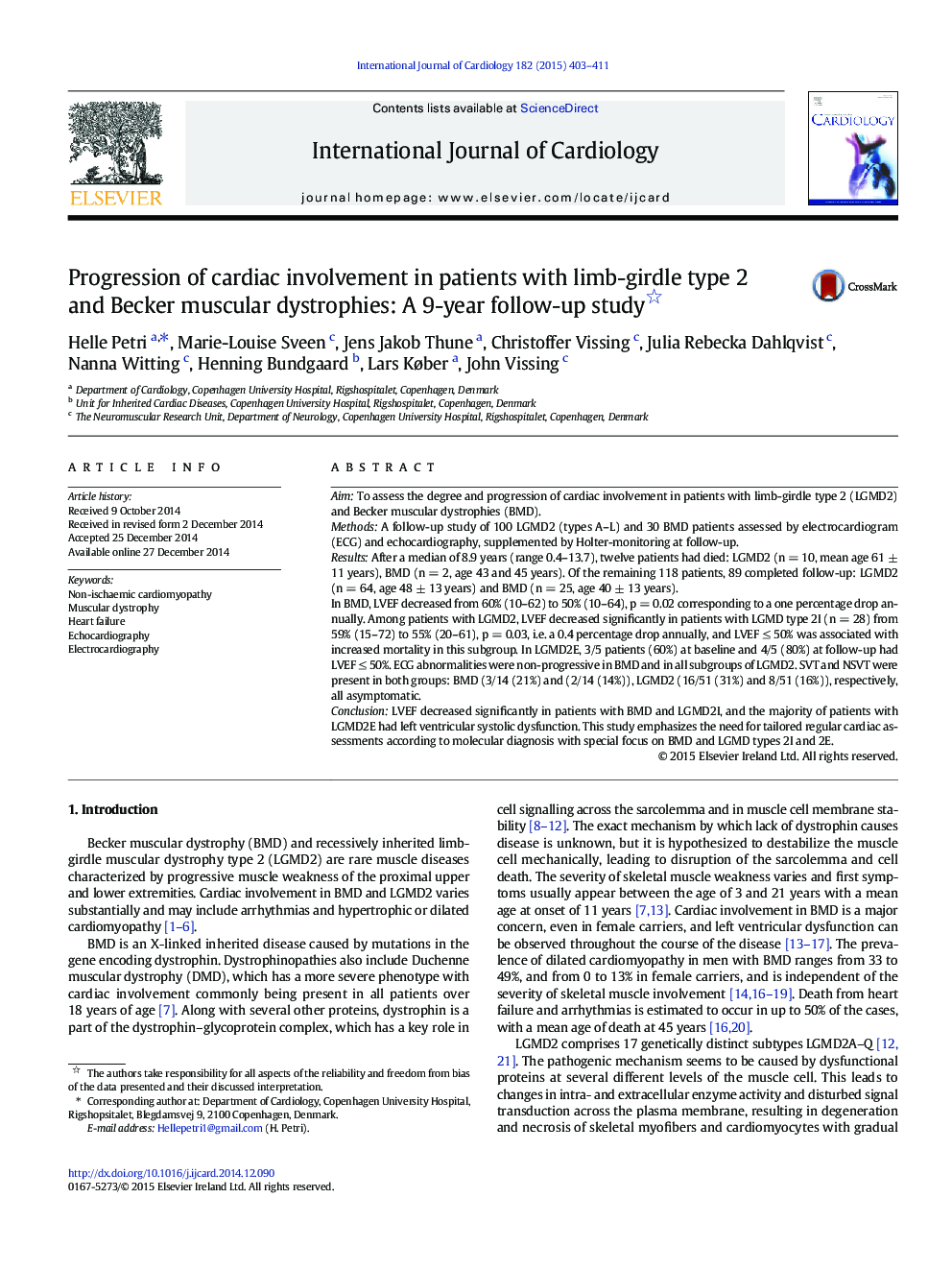| Article ID | Journal | Published Year | Pages | File Type |
|---|---|---|---|---|
| 5967409 | International Journal of Cardiology | 2015 | 9 Pages |
AimTo assess the degree and progression of cardiac involvement in patients with limb-girdle type 2 (LGMD2) and Becker muscular dystrophies (BMD).MethodsA follow-up study of 100 LGMD2 (types A-L) and 30 BMD patients assessed by electrocardiogram (ECG) and echocardiography, supplemented by Holter-monitoring at follow-up.ResultsAfter a median of 8.9 years (range 0.4-13.7), twelve patients had died: LGMD2 (n = 10, mean age 61 ± 11 years), BMD (n = 2, age 43 and 45 years). Of the remaining 118 patients, 89 completed follow-up: LGMD2 (n = 64, age 48 ± 13 years) and BMD (n = 25, age 40 ± 13 years).In BMD, LVEF decreased from 60% (10-62) to 50% (10-64), p = 0.02 corresponding to a one percentage drop annually. Among patients with LGMD2, LVEF decreased significantly in patients with LGMD type 2I (n = 28) from 59% (15-72) to 55% (20-61), p = 0.03, i.e. a 0.4 percentage drop annually, and LVEF â¤Â 50% was associated with increased mortality in this subgroup. In LGMD2E, 3/5 patients (60%) at baseline and 4/5 (80%) at follow-up had LVEF â¤Â 50%. ECG abnormalities were non-progressive in BMD and in all subgroups of LGMD2. SVT and NSVT were present in both groups: BMD (3/14 (21%) and (2/14 (14%)), LGMD2 (16/51 (31%) and 8/51 (16%)), respectively, all asymptomatic.ConclusionLVEF decreased significantly in patients with BMD and LGMD2I, and the majority of patients with LGMD2E had left ventricular systolic dysfunction. This study emphasizes the need for tailored regular cardiac assessments according to molecular diagnosis with special focus on BMD and LGMD types 2I and 2E.
